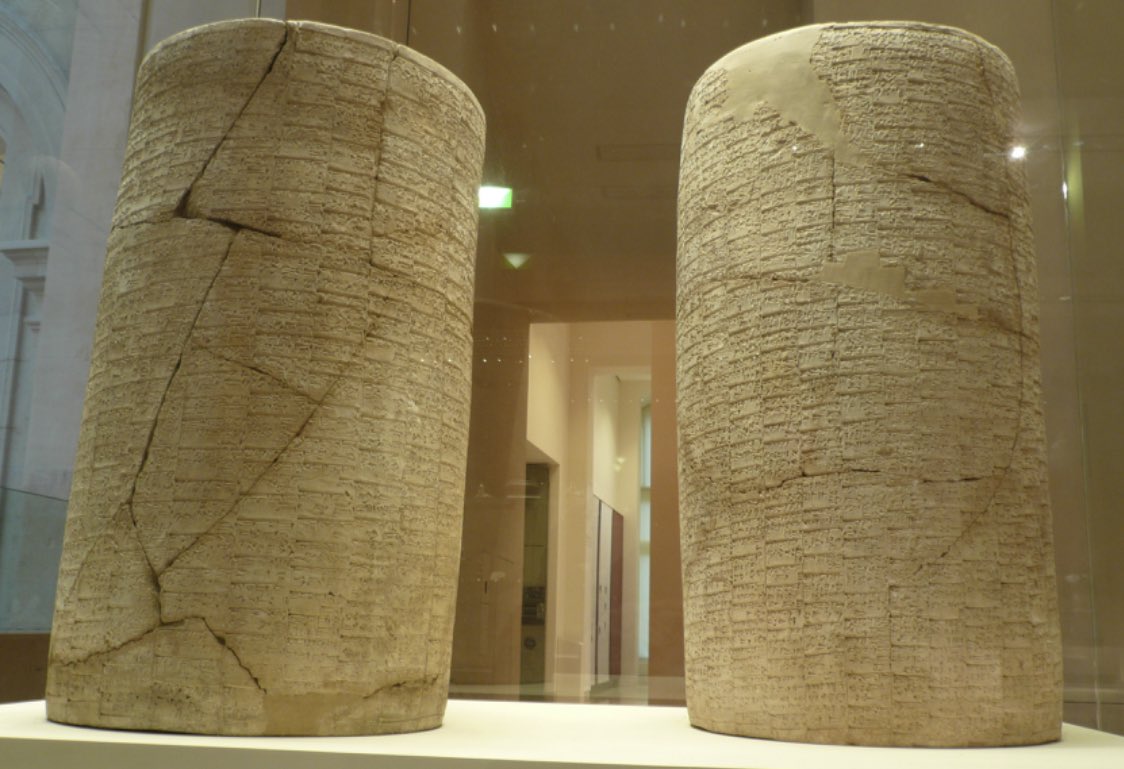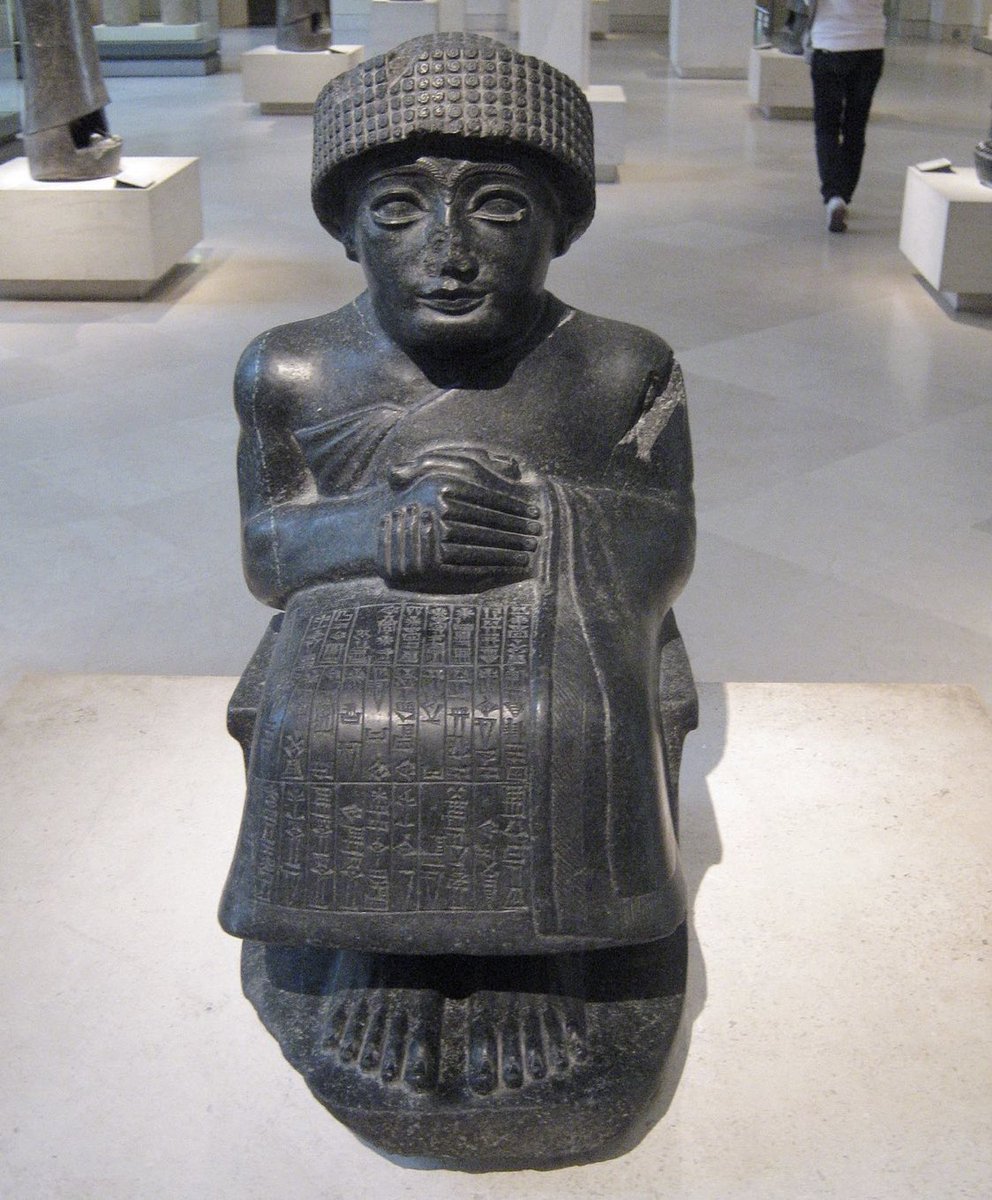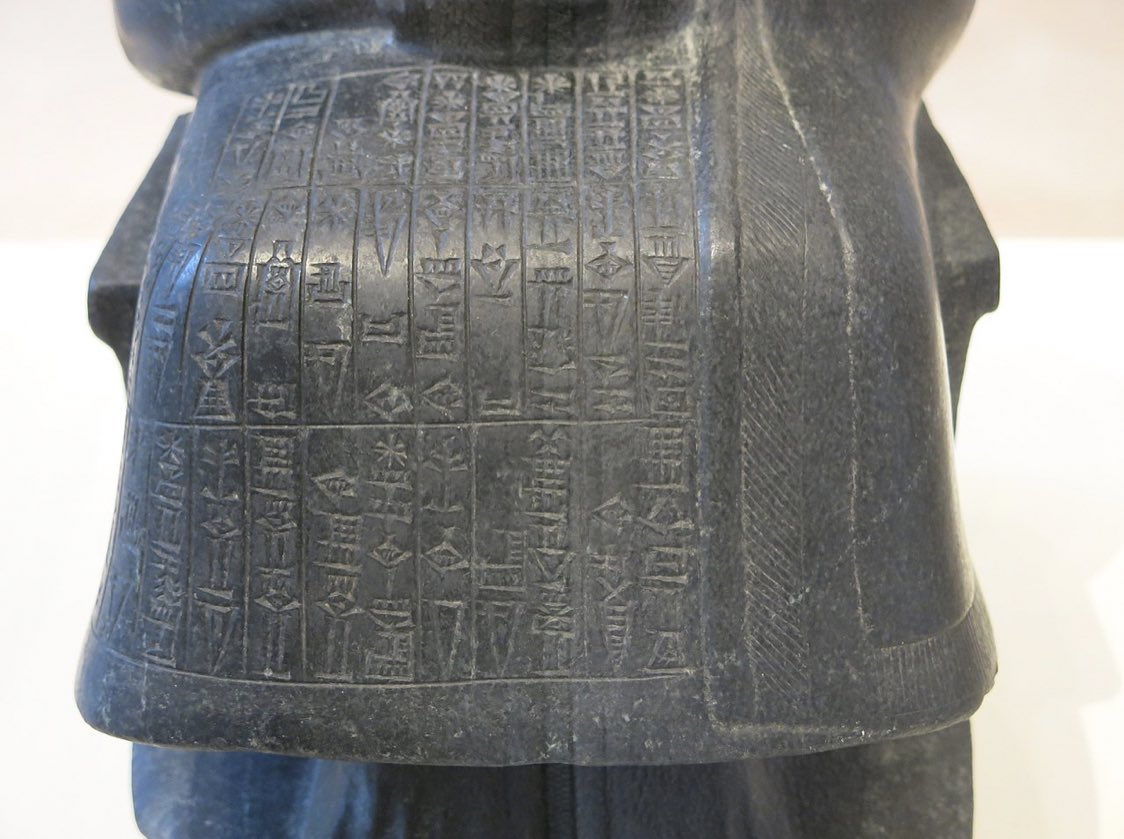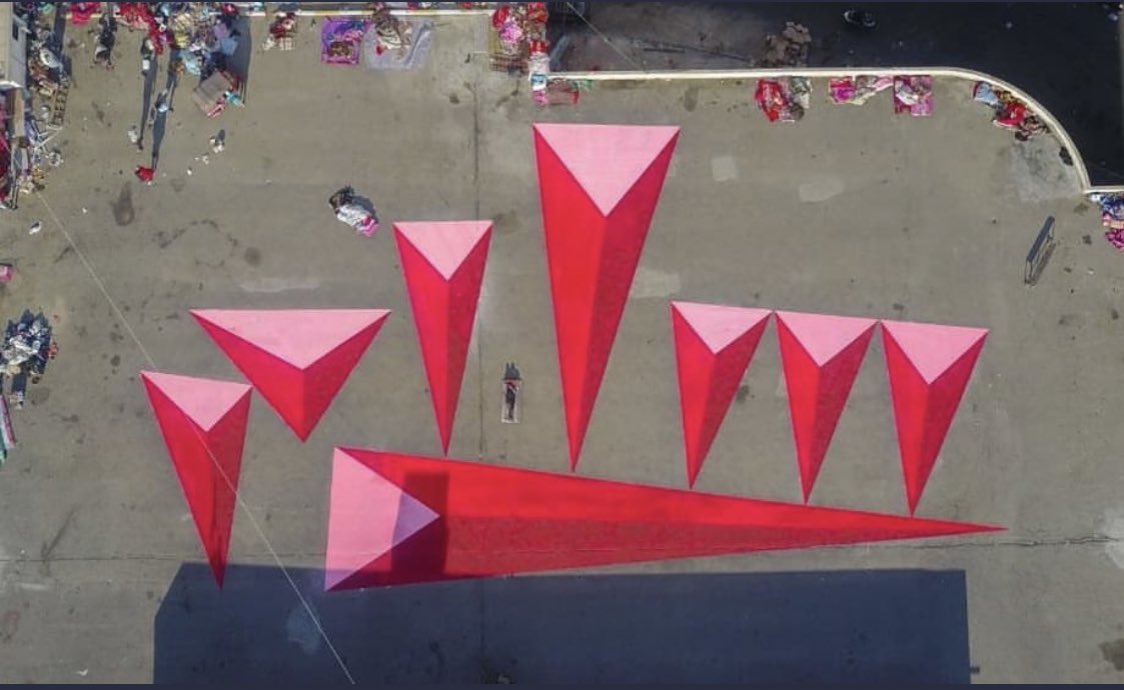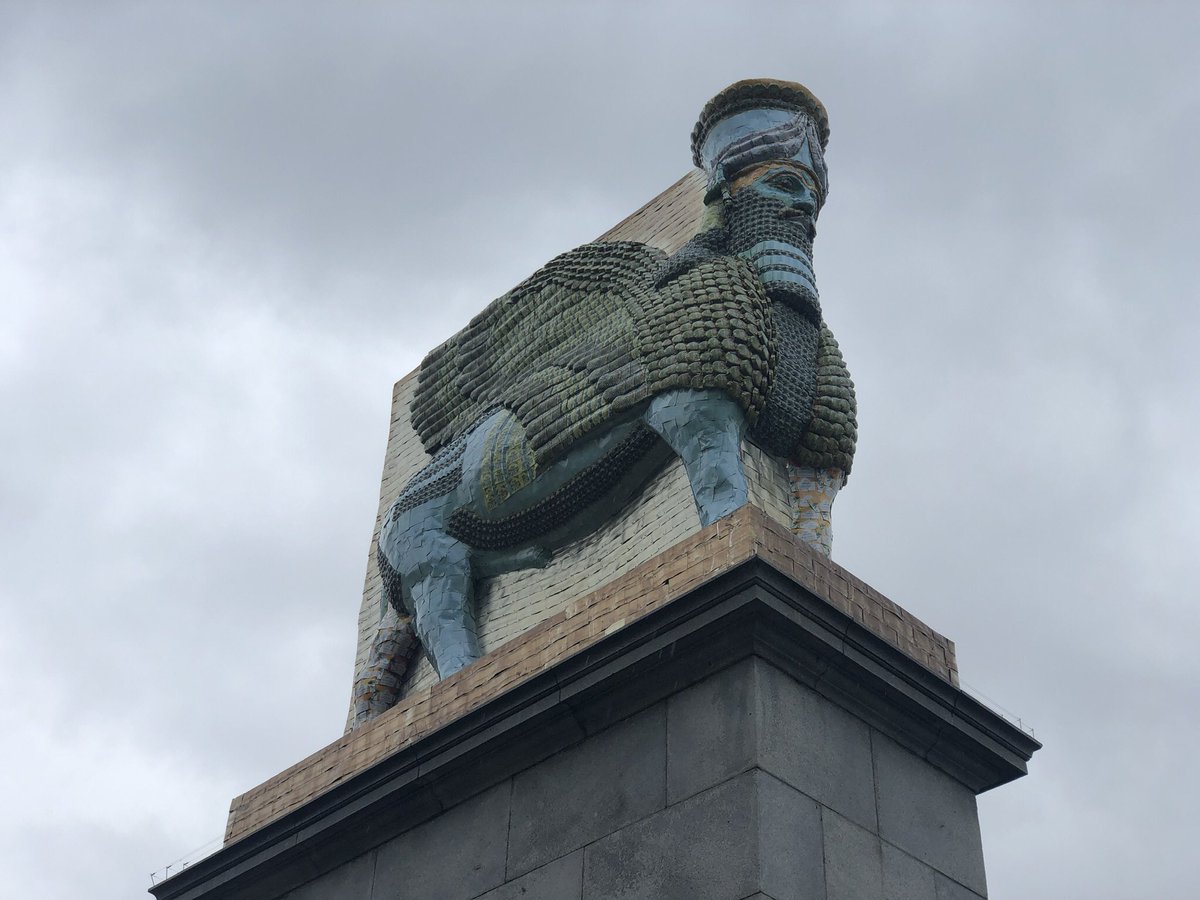Beautiful sculptures of two leaders from ancient Iraq.
Gudea ruled a city called Lagash and its surrounds, and Ur-Nammu founded the short-lived but epically documented Third Dynasty of Ur. Their effigies survived the test of time and now stand revived in their home country. https://twitter.com/junaid69515315/status/1263893157424574470">https://twitter.com/junaid695...
Gudea ruled a city called Lagash and its surrounds, and Ur-Nammu founded the short-lived but epically documented Third Dynasty of Ur. Their effigies survived the test of time and now stand revived in their home country. https://twitter.com/junaid69515315/status/1263893157424574470">https://twitter.com/junaid695...
“In a nocturnal vision, Gudea saw his master, Lord Ningirsu. Ningirsu spoke to him of his house...”
A series of clay cylinders tell the story of Gudea’s visionary dream in which the god Ningirsu instructs him to build a temple, the Eninnu, for his worship http://etcsl.orinst.ox.ac.uk/cgi-bin/etcsl.cgi?text=t.2.1.7#">https://etcsl.orinst.ox.ac.uk/cgi-bin/e...
A series of clay cylinders tell the story of Gudea’s visionary dream in which the god Ningirsu instructs him to build a temple, the Eninnu, for his worship http://etcsl.orinst.ox.ac.uk/cgi-bin/etcsl.cgi?text=t.2.1.7#">https://etcsl.orinst.ox.ac.uk/cgi-bin/e...
Gudea ruled in southern Iraq around 2200 BCE, and several statues of him were made during his rule, including ones that show him with an architect’s plan in his lap.
1,600 years later, some of these statues were dug up and displayed in the courtyard king Adad-nadin-ahhe
1,600 years later, some of these statues were dug up and displayed in the courtyard king Adad-nadin-ahhe
Ur-Nammu founded a dynasty in southern Iraq that flourished for about a century at the end of the 3rd millennium BCE.
He began building the famous ziggurat at Ur, Etemenniguru, that would be built and rebuilt until the city was abandoned around 400 BCE https://twitter.com/moudhy/status/1207249977388478464?s=21">https://twitter.com/moudhy/st... https://twitter.com/moudhy/status/1207249977388478464">https://twitter.com/moudhy/st...
He began building the famous ziggurat at Ur, Etemenniguru, that would be built and rebuilt until the city was abandoned around 400 BCE https://twitter.com/moudhy/status/1207249977388478464?s=21">https://twitter.com/moudhy/st... https://twitter.com/moudhy/status/1207249977388478464">https://twitter.com/moudhy/st...
Iraq’s ancient past is revived, revitalised, reinterpreted in so many contexts by and for Iraqis. From protest art to sculpture to modern Lamassu.
Images: Hammurabi’s stela by Assyrian artist Nenous Thabit, cuneiform protest art by Osama Sadiq, and a Lamassu by Michael Rakowitz
Images: Hammurabi’s stela by Assyrian artist Nenous Thabit, cuneiform protest art by Osama Sadiq, and a Lamassu by Michael Rakowitz
On Assyrian sculptor Nenous Thabit, see here: https://www.cnn.com/2016/11/17/middleeast/nimrud-iraq-mosul-artifacts/index.html
For">https://www.cnn.com/2016/11/1... Osama Sadiq’s art, see his Instagram: https://www.instagram.com/p/B-Kbr3Qpzdl/?igshid=1ch1wn3le5h1o">https://www.instagram.com/p/B-Kbr3Q...
For">https://www.cnn.com/2016/11/1... Osama Sadiq’s art, see his Instagram: https://www.instagram.com/p/B-Kbr3Qpzdl/?igshid=1ch1wn3le5h1o">https://www.instagram.com/p/B-Kbr3Q...

 Read on Twitter
Read on Twitter